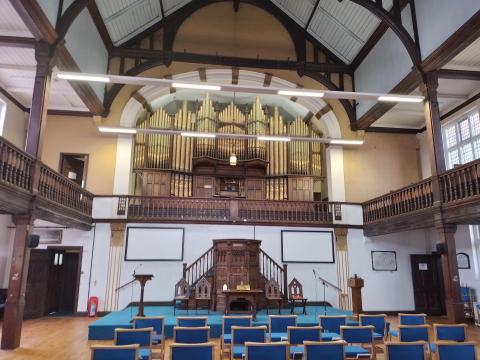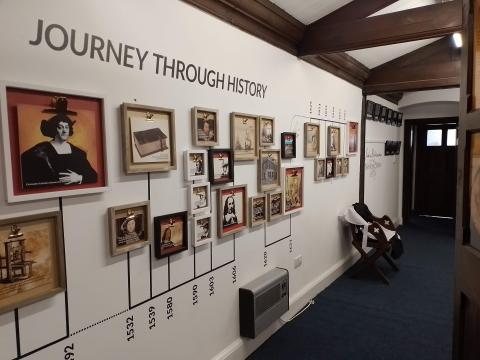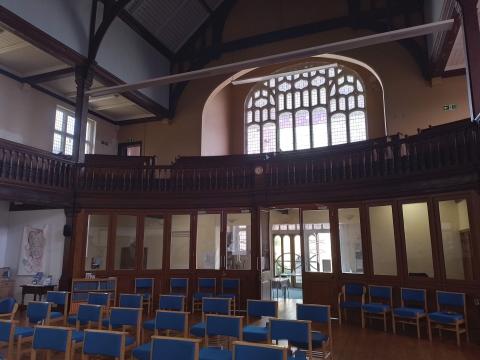The John Robinson Memorial Church

I called at Gainsborough this summer. I was surprised by two things. The first is the number of shirtless men wandering the streets, some of whom had more tattooed skin than not. The second was the state of access in which I found the parish church and the largest chapel. The former, unusually, was closed, while the latter, thankfully, was open. A planned period of time spent inspecting the Anglican church was transferred to the nonconformists.
The chapel's name is a bit of a mouthful: The John Robinson Memorial United Reformed Church at Gainsborough. Back in ’72, this body of Congregationalists, like ourselves, had to vote on whether or not to join the URC. They did, we didn’t. So here we essentially have an old Congregational chapel, a church that stood on the shoulders of the puritans and which filled its arteries with scripture, rather than human tradition. Yet even under the guise of the The John Robinson Memorial Congregational Chapel, the naming after an individual is unusual. Our chapels generally bear Biblical epithets, like Zion, Bethel or Salem, not St So-and-so and St What’s-her-face.

John Robinson was an early Separatist, a radical puritan who rejected the concept of a state church funded by compulsory tithes while being controlled by powerful and wealthy bishops. He and others such as John Smyth, William Brewster and Richard Clifton, all hailed from that area. Robinson met with Smyth at Gainsborough, possibly forming a 'Gathered Church' which met at the Old Hall. Robinson and his flock eventually managed to emigrate to Holland, and many of the others became the famous Pilgrim Fathers, to whom Robinson was considered pastor. On the chapel's wall is written:
This tablet, unveiled June 11th 1902 in the 300th year after the formation of the church in Gainsborough with which the name of John Robinson is associated, stands as a record of the co-operation of American with English Congregationalists in erecting a building to commemorate him, the thought of whom stirs equal reverence in English and American hearts.
And next to the pulpit itself we read words from the original Gathered Church’s 1602 covenant:
To walk in His ways made known, or to be made known unto them, according to their best endeavours. Whatsoever it should cost them, the Lord assisting them.
In our currently benighted land, all churches and chapels are under pressure, some struggling to keep open their doors, many more apparently baffled by the prospect of preaching the actual gospel. The URC seems to be almost as nimble as the Methodists in closing its various premises, so we can only hope that a church dedicated to a man who made a stand for truth will remain open -if it, too, makes a stand for truth. The current building’s foundation stone was laid by the American Ambassador to Great Britain and Ireland, His Excellency F.T. Bayard, in 1896, to much fanfare.

Two friendly folk (one a cheery Scot) bade me welcome as I entered the building, and pointed me in the direction of a special exhibition they had put on regarding early Separatism and the Pilgrim Fathers. Here, I thought, was a place of wonderful Christian history, but its future, as elsewhere, is in doubt. Would that God raises up another John Robinson, not to just be remembered by the churches, but to plant them afresh and strengthen what remains.
And I will multiply upon you man and beast, and they shall increase, and bring fruit, and I will cause you to dwell after your old estate, and I will bestow benefits upon you more than at the first, and ye shall know that I am the Lord. Ezekiel 36:11, Geneva Bible

- Log in to post comments


 Sunday Worship 10.45am & 6.00pm
Sunday Worship 10.45am & 6.00pm